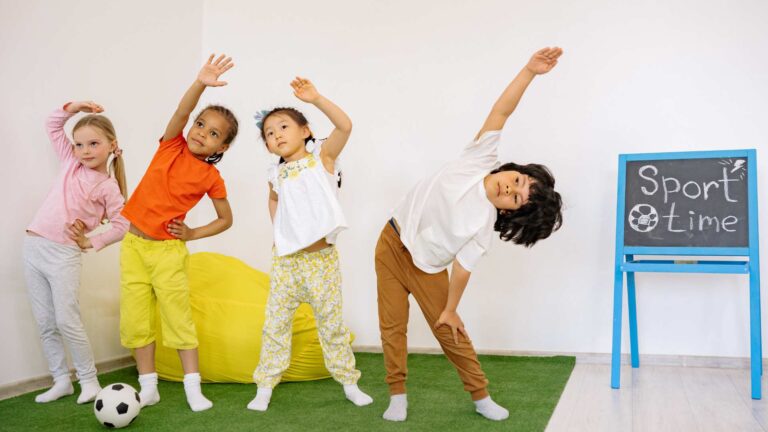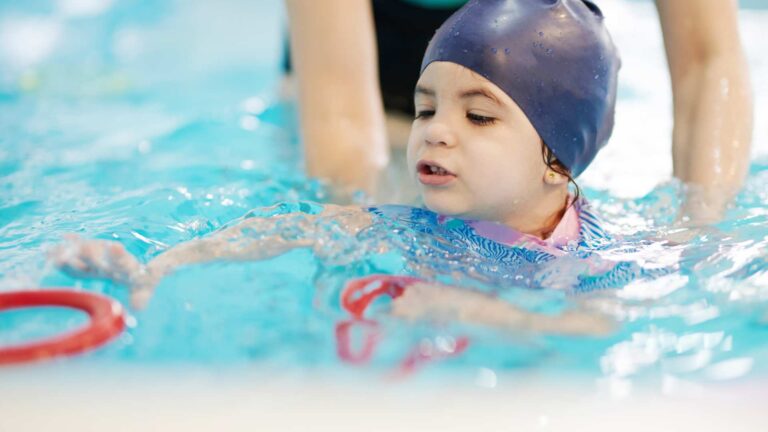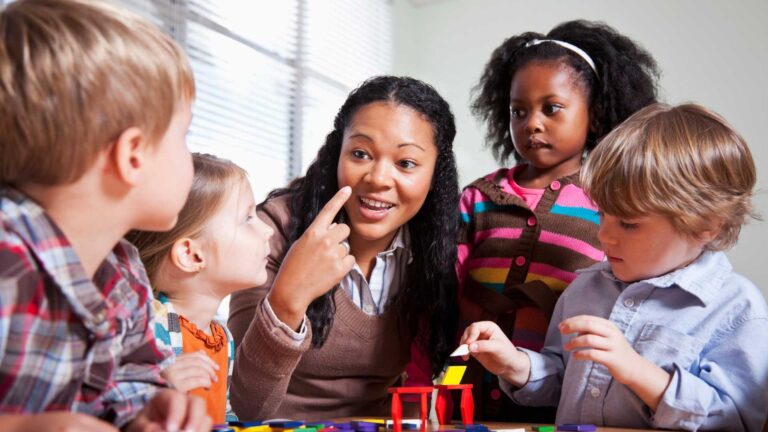Table of Contents
How can inclusive sports help children with autism?
If you are looking for an excellent opportunity to enhance the physical and social abilities of children in the neurodiverse community, here is some information about sports for kids with autism. These activities are specially designed to address challenges like motor coordination and social interactions, creating a supportive environment where children build confidence, develop motor skills, and actively engage in physical activities.
Team sports promote essential social skills such as turn-taking, cooperation, and communication. Some research indicates that as children engage in team activities, they not only improve their social abilities but also form lasting friendships within a structured environment.
In this blog by ABA Centers of Rhode Island, we explore why sports for kids with autism are an excellent option, how to identify the best inclusive sports for your child, and how to support them in these settings. We present five strategies, each with detailed explanations and practical tips. These strategies will help ensure a positive sports experience, providing valuable opportunities for inclusion and personal growth.
1.Sports and Autism: Examine and Choose the Best for Your Child
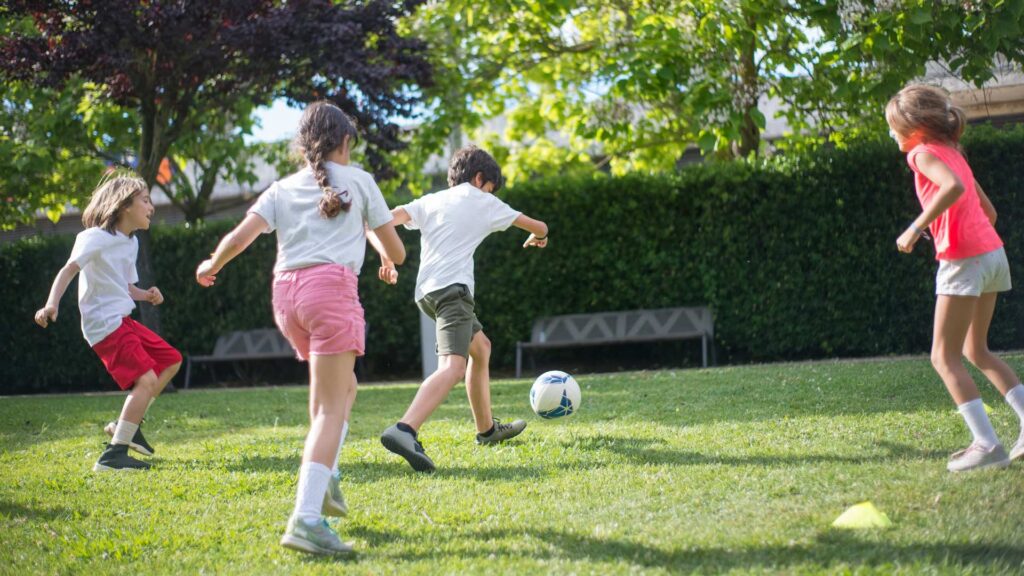
To determine if your child is a good candidate for sports, start by looking at their interest and enjoyment in different activities. If they show curiosity or excitement, they may be open to participating. Additionally, consider their willingness to engage in new activities and follow simple instructions. Finally, assess how comfortable they are in social situations and whether they can tolerate group settings or prefer to be alone.
In general, inclusive sports can be an excellent way for kids with autism to develop skills, socialize, and gain confidence. However, it is crucial to choose the right sport that aligns with your child’s unique needs and preferences.
Practical Tips:
- Observe Their Interests and Reactions: Pay attention to what types of physical activities or movements your child enjoys. Do they like running, swimming, or activities that involve water or physical interaction? Their natural preferences, for example, when they are playing, can provide clues about what sports they might enjoy.
- Ask About Their Comfort with Group Settings: Ask your child how they feel about being around others during activities. If they are comfortable in small groups or one-on-one settings but become overwhelmed in large groups, individual sports like swimming or tennis might be better options than team sports.
- Pay Attention to How Well Your Child Follows Directions: Do they do well with simple routines and structured activities? If they seem to enjoy tasks that involve focus and repetition, something like gymnastics or martial arts might be a great option. On the other hand, if they’re good at working with others and following group instructions, a team sport could be a better fit.
2. Create an Environment that is Predictable and Structured
Children with autism thrive on predictability. They typically feel most comfortable in structured environments, which reduces anxiety and confusion. If you want to introduce sports for kids with autism, it’s essential to establish a reliable routine for practices, games, and other activities. This consistency provides the child with a greater sense of safety and enhances their ability to engage in sports.
Practical Tips:
- Set Clear Expectations: Communicate the expectations for each practice or game ahead of time. Explain the activities, any changes, and the overall structure. Use visuals alongside verbal instructions to help your child understand what to expect.
- Use Visual Support: Provide a visual schedule outlining the sequence of events during practice or games. Use pictures or icons to help your child anticipate each step and make transitions easier.
- Maintain Consistency in Routines: Keep the time and location of practices and games consistent. A predictable schedule will help your child feel more secure and confident in the environment.
In Rhode Island, organizations such as The Autism Project are working with families to develop organized routines and programming tailored to the needs of children with autism. With the support of local organizations, parents and coaches can obtain information on how to establish a structured sporting activity.
3. Use Positive Reinforcement to Promote Engagement and Effort
Reinforcing behaviors increases an individual’s likelihood of engaging in them again in the future. This strategy, similar to the one used in ABA therapy, is highly effective in sports for kids with autism because it encourages participation and effort, especially when a child is struggling with a specific task or skill.
Practical Tips:
- Praise Immediately: Provide immediate praise when a child completes a task, such as following instructions or showing a new skill. Positive reinforcement strengthens the connection between their action and the positive outcome, making them more likely to engage in the behavior again during sports activities.

- Reinforce Efforts, Not Just Results: Recognize and praise smaller efforts, such as trying a new skill, following directions, or demonstrating persistence, even if the child doesn’t fully achieve the desired result. It boosts motivation and confidence, especially for children who may be struggling with certain aspects of sports.
- Use Social Reinforcers: In addition to physical rewards, incorporate social reinforcement, such as high-fives or verbal praise, when a child completes a skill. Positive recognition from coaches or peers can motivate children with autism to keep participating and improving in sports.
4. Break Tasks Down and Provide Simple Directions
Children on the spectrum can struggle to follow complex directions with multiple steps, including understanding complex tasks or a game’s rules. Breaking tasks down into smaller tasks or manageable steps and using clear, simple language to provide directions or explanations are effective strategies for developing a child’s understanding and ability to complete a task.
Practical Tips:
- Break Tasks into Smaller Steps: Analyze complex skills by breaking them down into smaller, manageable components. For example, when teaching a child to pass a soccer ball, guide them through each action: “step forward,” “position feet,” “look at the target,” and “kick the ball.” Continue to guide them step-by-step until they master the skill.
- Use Clear, Direct Language: Avoid vague instructions and lengthy explanations. Provide simple, straightforward commands like “pass the ball” or “run to the cone.” It reduces confusion and helps the child focus on the task.
- Incorporate Visual or Auditory Cues: Some children may respond better to visual or auditory cues, such as a whistle or colored target. Use these cues to provide additional support, helping the child understand when and how to perform each step.
5. Be Sensitive to Sensory Sensitivities
Children with autism often have heightened sensory sensitivities as well. Therefore, in the context of sports, sounds (such as cheering), lights, or touch may cause a child to become overstimulated, which can limit a child’s ability to engage in sporting activities.
Practical Tips:
- Create Sensory-Friendly Environments: Designate a quiet area for children to go to if needed. This area could include noise-canceling headphones, sunglasses, or even a cozy couch to relax away from sensory input.
- Prepare for Sensory Sensitivities: Discuss potential sensory triggers with your child before games or practices. For example, explain loud cheering or bright lights (vs. dim lighting) so the child is aware and can better manage sensory overload. Giving them this information beforehand provides a sense of control.
- Introduce Calming Strategies: Introduce your child to calming strategies, like taking deep breaths or going on a sensory break, to help manage their anxiety and/or stress during an activity. These strategies can be beneficial for them when they feel overwhelmed while practicing or playing a game.
Sports for Kids with Autism: A Quick Overview
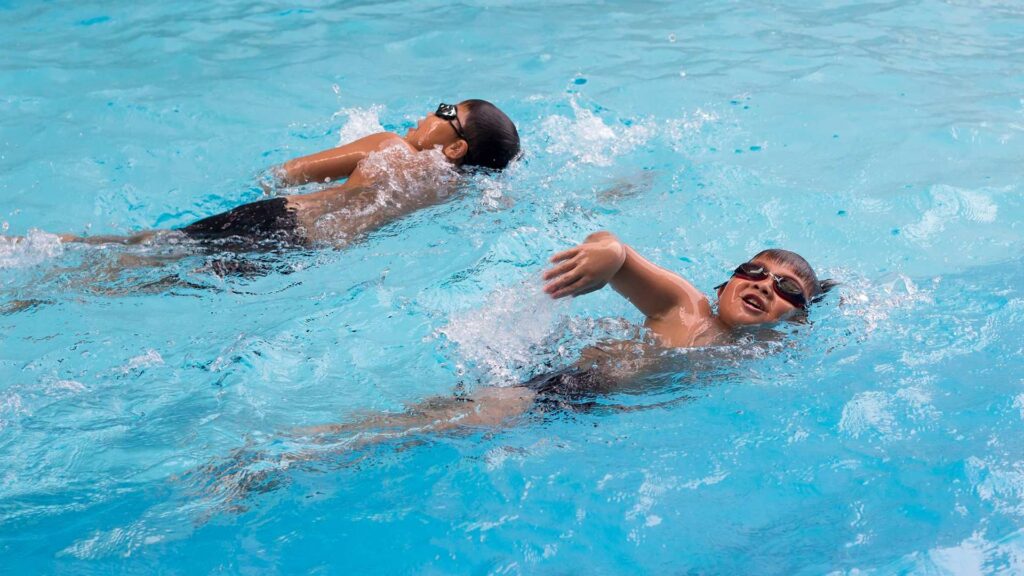
- Swimming: it is an excellent option as it provides a calming effect and promotes sensory integration. The repetitive movements of swimming lead to motor development for children and give the calming effect of being in the water.
- Martial Arts: karate or taekwondo offers structure, repetition, and clear instructions, along with assisting focus, self-discipline, and coordination, which are advantageous for children with autism.
- Track and Running: This kind of sport gives kids an opportunity to be physically active at their level. There is individualization and structure to the activity with a clear objective, and, therefore, a good chance for the child to feel a sense of accomplishment.
- Horseback Riding: Equine therapy or horseback riding can help children develop balance, coordination, and communication skills. The bond with the horse provides emotional benefits and reduces anxiety. It is often used in autism and sports therapy and has shown positive results in improving sensory processing and social skills.
- Yoga: Yoga is a low-impact activity that improves flexibility, balance, and relaxation. It encourages mindfulness and self-regulation, which can help children with autism manage stress and anxiety.
Discover How ABA Centers of Rhode Island Can Support Your Child
At ABA Centers of Rhode Island, we offer specialized, evidence-based Applied Behavior Analysis (ABA) services tailored to meet the unique needs of children and teenagers on the spectrum.
Whether your child has difficulties with athletic skills or socialization skills (or, as a parent, you prefer therapy in the home), we offer the tools and support necessary to provide success in sports and life. We support participation, enhance confidence, and promote sustained developmental progress.
To learn more about how we can assist in your child’s development and enhance their sports experience, contact us today by clicking here for a free consultation or by calling (855) 922-4184.
Together, let’s help your child reach their full potential, both in sports and beyond!

